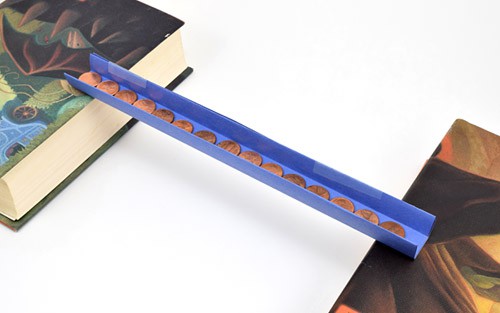Summary
This activity was inspired by Prof. Margot Vigeant of Bucknell University.
Special thanks to teachers Cynthia Burke and Chris Bell for helpful discussions about this activity.
Overview
Your students have probably walked or ridden over a bridge at some point in their lives. In this engineering activity they will design and make bridges out of folded pieces of paper, and test how much weight they can hold with pennies. How does the shape of a bridge affect its strength? Let your students explore and find out with this lesson!
This lesson can be expanded to a second lesson looking at how the material a bridge is made out of can change its strength; see second lesson for details.
Learning Objectives
- Explain how a bridge's shape can make it stronger.
- Perform tests to compare different bridge designs and determine which one can support more weight.
NGSS Alignment
This lesson helps students prepare for these Next Generation Science Standards Performance Expectations:- K-2-ETS1-2. Develop a simple sketch, drawing, or physical model to illustrate how the shape of an object helps it function as needed to solve a given problem.
- K-2-ETS1-3. Analyze data from tests of two objects designed to solve the same problem to compare the strengths and weaknesses of how each performs.
|
Science & Engineering Practices
Planning and Carrying out Investigations. Make observations (firsthand or from media) and/or measurements to collect data that can be used to make comparisons.
Using Mathematical and Computational Thinking. Use quantitative data to compare two alternative solutions to a problem. Constructing Explanations and Designing Solutions. Generate and/or compare multiple solutions to a problem. |
Disciplinary Core Ideas
ETS1.C: Optimizing the Design Solution. Because there is always more than one possible solution to a problem, it is useful to compare and test designs.
|
Crosscutting Concepts
Structure and Function. The shape and stability of structures of natural and designed objects are related to their function(s).
|
Materials
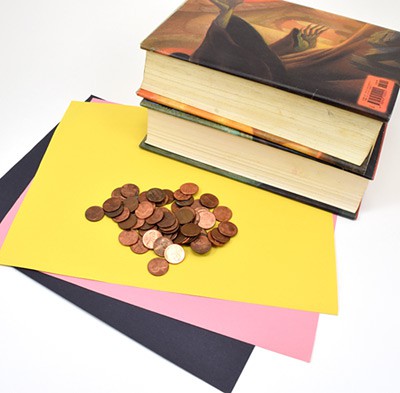 Image Credit: Ben Finio, Science Buddies / Science Buddies
Image Credit: Ben Finio, Science Buddies / Science Buddies
For each group of students:
- Sheets of printer or construction paper (10)
- Stacks of books, or small boxes (2)
- Pennies (about 30, more may be required for stronger designs)
- Tape
- Ruler
Background Information for Teachers
This section contains a quick review for teachers of the science and concepts covered in this lesson.In this project, your students will build bridges out of single sheets of paper, that will potentially hold dozens of pennies. You might wonder: how can a single piece of paper hold up dozens of pennies when it cannot even support its own weight (Figure 1)?
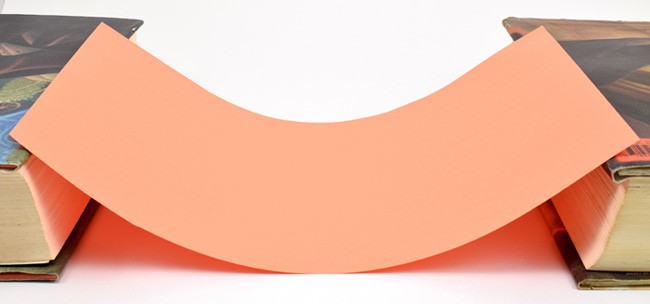 Image Credit: Ben Finio, Science Buddies / Science Buddies
Image Credit: Ben Finio, Science Buddies / Science Buddies
Figure 1. A single piece of paper between two stacks of books falls down under its own weight.
The answer lies in folding the paper to change its cross section (the shape you see when you look at the paper edge-on). Think about bending a ruler. A ruler has a (roughly) rectangular cross section that is very thin in one direction and thicker in the other direction. It is very easy to bend the ruler in the thin dimension, but much more difficult to bend it in the thick dimension (Figure 2).
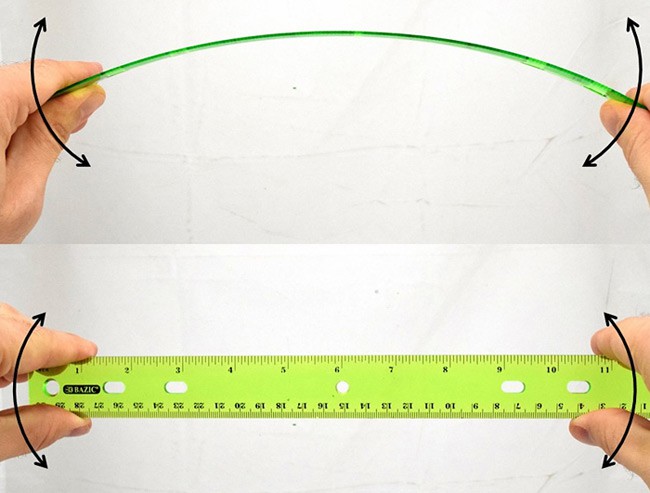 Image Credit: Ben Finio, Science Buddies / Science Buddies
Image Credit: Ben Finio, Science Buddies / Science Buddies
Figure 2. A ruler is easy to bend one way but nearly impossible to bend the other way.
The exact same concept applies to paper. A flat sheet of paper has a very thin cross section. That makes it very easy to bend, so it cannot even support much weight, let alone carry a load (additional weight, like people and cars on a real bridge). However, you can fold or roll the paper into a variety of cross-sectional shapes (Figure 3), all of which are much harder to bend. These shapes can easily carry a load in addition to their own weight.
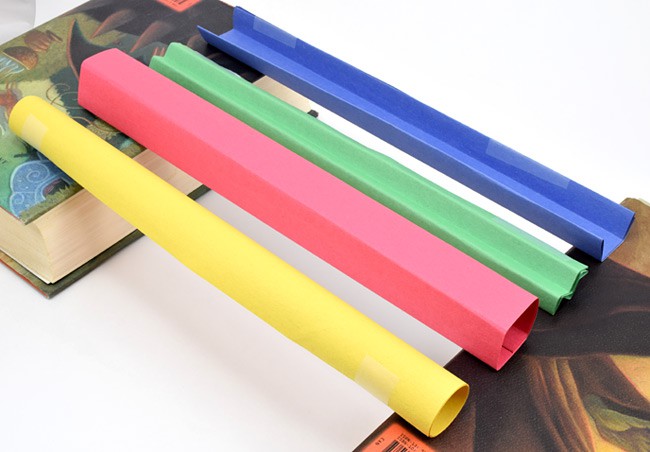 Image Credit: Ben Finio, Science Buddies / Science Buddies
Image Credit: Ben Finio, Science Buddies / Science Buddies
Figure 3. Paper bridges with different cross sections.
Which shapes work the best? That is for your students to find out in this project!

